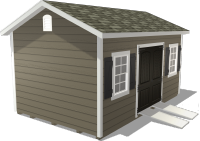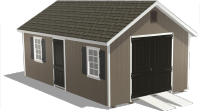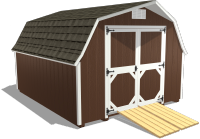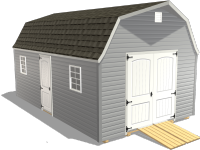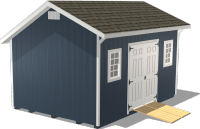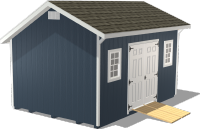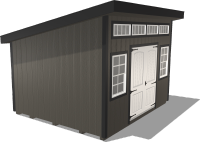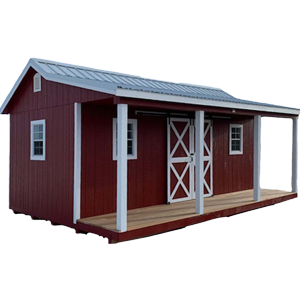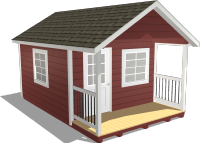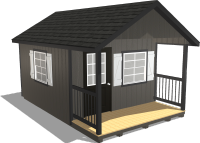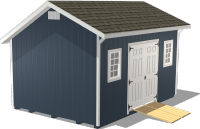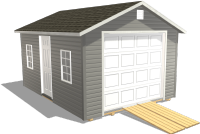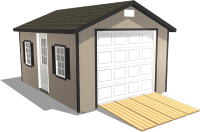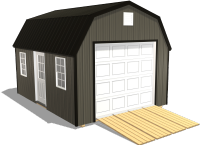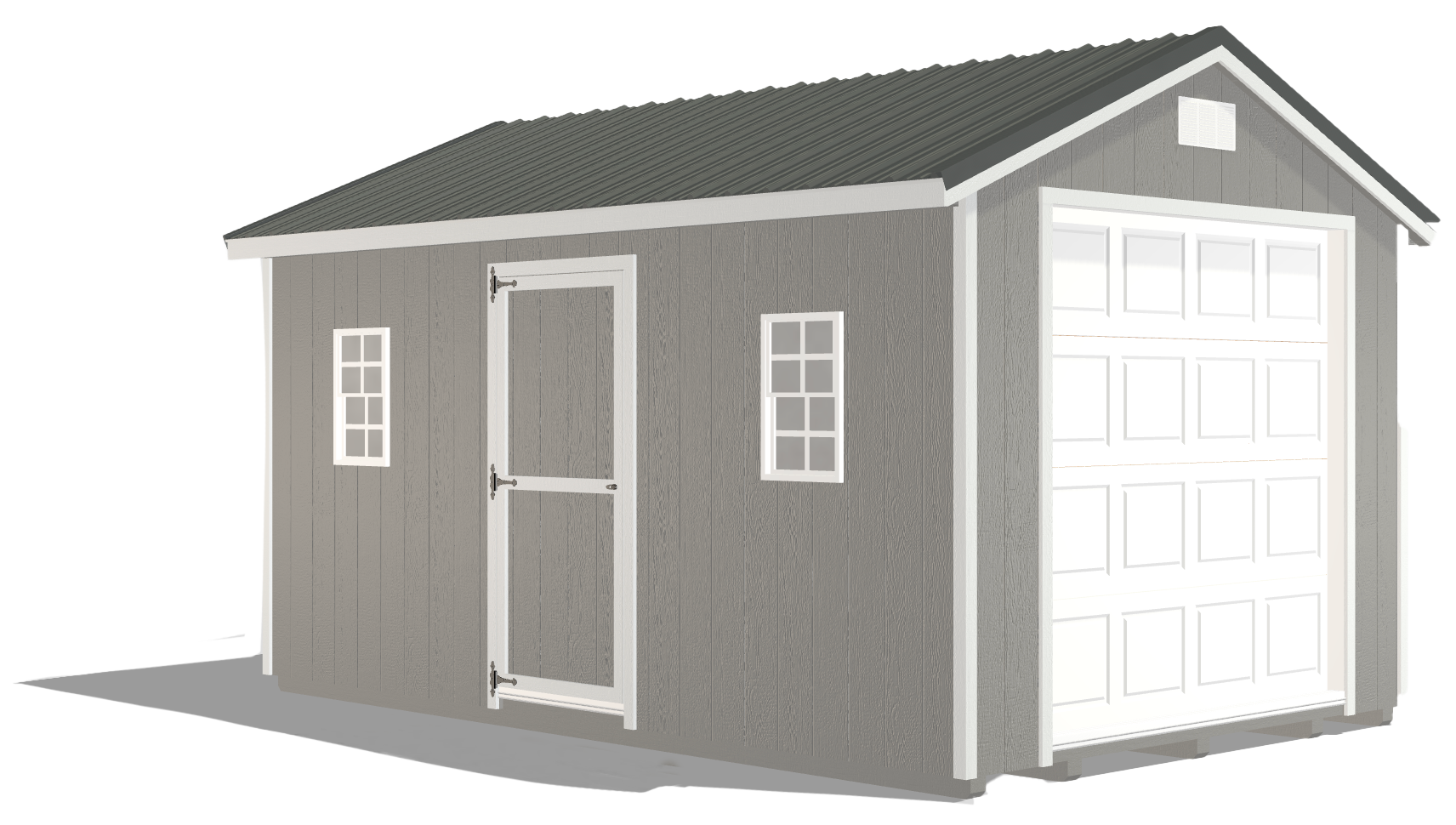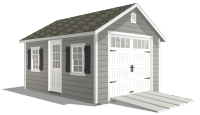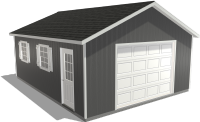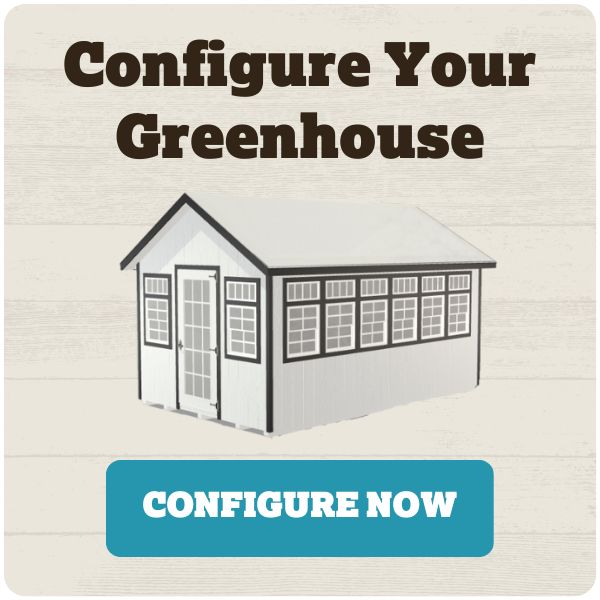Hydroponics vs. Soil: Which Method Yields Better Results in a Greenhouse?
by Dakota Storage Buildings, on February 19, 2025

Choosing between hydroponics and soil-based greenhouse gardening can be one of the most critical decisions for gardeners. Both methods offer unique benefits and challenges, and the right choice depends on your resources, goals, and plant preferences. Whether you are looking to maximize efficiency or prefer a more traditional approach, understanding the key differences can help you make the most of your greenhouse.
No matter which growing method you choose, a greenhouse can help set up your garden for success. A durable, well-constructed greenhouse ensures optimal growing conditions, like controlling tempatures, regulating moisture, and protecting plants from the elements. In this blog, we will compare hydroponics vs. soil-based gardening, covering their pros and cons, best plants, and maintenance requirements to help you make the best decision for your plants.
Is Hydroponic Growing the Right Choice for Your Greenhouse?
Hydroponics is a soil-free growing method where plants thrive in nutrient-rich water solutions. While this innovative approach offers significant benefits, it also comes with its own challenges.

The Top Benefits of Hydroponic Gardening
- Faster Growth Rates: Plants in hydroponic systems often grow faster because nutrients are delivered directly to the roots, speeding up their development.
- Water Efficiency: Hydroponics uses significantly less water than traditional soil gardening since the water is recirculated within the system.
- Nutrient Control: You can precisely manage nutrient levels, ensuring plants get the ideal balance of essential minerals for optimal growth.
- Space Optimization: Hydroponic systems can be set up vertically or in compact areas, making them perfect for smaller greenhouses.
Key Drawbacks to Keep in Mind
- Higher Setup Costs: Initial costs for equipment, such as pumps, reservoirs, and nutrient solutions, can be expensive.
- Technical Dependence: Hydroponic systems rely on technology, and any malfunctions — like a pump failure — can quickly harm plants.
- Learning Curve: Managing nutrient levels and pH requires careful monitoring and some learning for beginners.
The Perfect Match for Hydroponics
Hydroponics is ideal for gardeners with limited space. Their compact systems make them perfect for small greenhouses. This method is also a top choice for anyone wanting to prioritize water conservation, since hydroponic systems use up to 90% less water than traditional soil gardening. If you are looking for faster plant growth and bigger harvests, hydroponics might be your new best friend. It gives you precise control over nutrients and growing conditions, so your greenhouse plants get exactly what they need to thrive. Plus, since there is no soil involved, you can say goodbye to soil-borne pests and diseases. Whether you are growing leafy greens, herbs, or even small fruits, hydroponics makes it easier to get consistent, impressive results.
Is Soil-Based Gardening the Right Fit for Your Greenhouse?
Soil-based greenhouse gardening is the traditional approach, where plants are grown in nutrient-rich soil. It offers simplicity and familiarity, making it a great choice for many gardeners.

The Natural Benefits of Growing in Soil
- Simpler Setup: Soil gardens are easier and more cost-effective to set up, requiring fewer tools and less technical knowledge.
- Natural Support: Soil provides natural anchoring for plant roots, which is especially beneficial for larger plants.
- Diverse Plant Options: A wider variety of plants, including root vegetables and fruiting crops, thrive in soil-based environments.
The Challenges of Traditional Soil Gardening
- Pests and Diseases: Soil can harbor pests, fungi, and diseases that may threaten plant health.
- Higher Water Usage: Soil-based gardens generally require more water than hydroponic systems.
- Maintenance Needs: Regular weeding, soil amendments, and monitoring for nutrient depletion are necessary.
The Best Fit for Soil Gardening
Soil-based gardening works well for gardeners seeking a low-tech, cost-effective option or for growing plants. It is ideal for anyone who may enjoy a more traditional, hands-on greenhouse gardening experience. With soil, you have more flexibility to grow a wider variety of crops, including larger plants like root vegetables, fruiting trees, or sprawling vines that benefit from deep, stable roots. Plus, soil acts as a buffer for water and nutrients, making it more forgiving if watering or fertilization schedules are not perfect. For gardeners who value simplicity, soil-based gardening offers a rewarding and approachable way to grow a thriving greenhouse garden.
Find the Right Plants for Hydroponic and Soil-Based Gardening
The type of plants you want to grow can help determine whether hydroponics or soil is the better fit.

Crops That Thrive in Hydroponic Systems
Hydroponic systems excel with fast-growing plants that do not require deep root structures. These plants include:
- Leafy greens like lettuce, spinach, and kale
- Herbs such as basil, cilantro, and mint
- Small fruits like strawberries and cherry tomatoes
Ideal Plants for Traditional Soil Gardening
Soil gardens accommodate a broader range of greenhouse plants, particularly those with larger roots or higher nutrient demands. Examples include:
- Root vegetables like carrots, radishes, and potatoes
- Fruiting plants such as peppers, cucumbers, and beans
- Larger crops like squash, eggplants, and tomatoes
Match Your Crops to the Right Growing System
When deciding between hydroponics vs. soil-based gardening, consider your plant goals, available space, and overall resources. If you are focused on smaller, fast-growing crops like leafy greens or herbs, hydroponics offers greater efficiency and precision. Its compact systems are perfect for maximizing space in small greenhouses or vertical setups. On the other hand, soil-based gardening is better suited for larger, traditional crops such as root vegetables, fruiting plants, or sprawling vines that require deep root support and natural stability.
Also, take maintenance into account: hydroponics requires careful monitoring of nutrient solutions and technology, while soil gardening is more forgiving and provides a buffer against minor watering or fertilizing inconsistencies. By aligning your greenhouse gardening method with your crop needs, time commitment, and space availability, you can create a productive greenhouse environment that thrives.
What It Takes to Get Started and Maintain Your Garden
While both methods can thrive in a greenhouse, their setup and maintenance needs vary significantly.
![]()
Hydroponic Gardens
- Setup: A basic hydroponic system includes water reservoirs, pumps, nutrient solutions, and grow trays. Systems like Deep Water Culture or Nutrient Film Technique are popular for beginners.
- Maintenance: Regularly monitor water pH, nutrient levels, and oxygenation to ensure healthy plant growth. Clean the system periodically to prevent algae buildup or clogs.
![]()
Soil-Based Gardens
- Setup: Soil gardening requires nutrient-rich soil, containers or raised beds, and tools for planting and watering.
- Maintenance: Soil gardens require tasks like watering, fertilizing, and occasional soil testing. Weeding and pest control are also key to maintaining healthy greenhouse plants.
Ongoing Maintenance for Each Method
Ongoing maintenance for hydroponics vs. soil-based gardening differs significantly. Hydroponic systems require frequent monitoring of water quality, nutrient concentration, and equipment function to ensure greenhouse plants receive the right balance of nutrients and environmental conditions. On the other hand, soil-based gardening involves regular soil care, such as replenishing nutrients, managing pests, and maintaining proper irrigation to support healthy plant growth. While hydroponics demands precision and consistent attention, soil gardening offers a more forgiving approach with its natural buffering capabilities.
The Right Method Starts With the Right Greenhouse
Hydroponics vs. soil-based gardening each offer distinct advantages for greenhouse growers. Hydroponics provides faster growth, water efficiency, and precision control, making it ideal for space-limited gardeners or those focused on productivity. Soil-based gardening, on the other hand, offers simplicity, natural plant support, and compatibility with a broader range of crops.
Regardless of which method you choose, success starts with a quality greenhouse. A well-constructed greenhouse ensures a stable, controlled environment where both hydroponic and soil-based plants can thrive year-round.
Take the time to evaluate your resources, goals, and preferred plants to decide which method best suits your needs. Whether you are exploring hydroponics for efficiency or sticking with the tried-and-true soil approach, the right greenhouse will help you grow your gardening dreams into reality. Shop stock greenhouses today and get growing!



